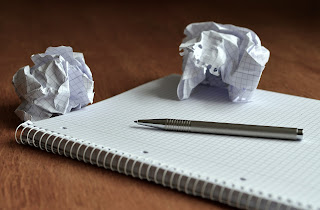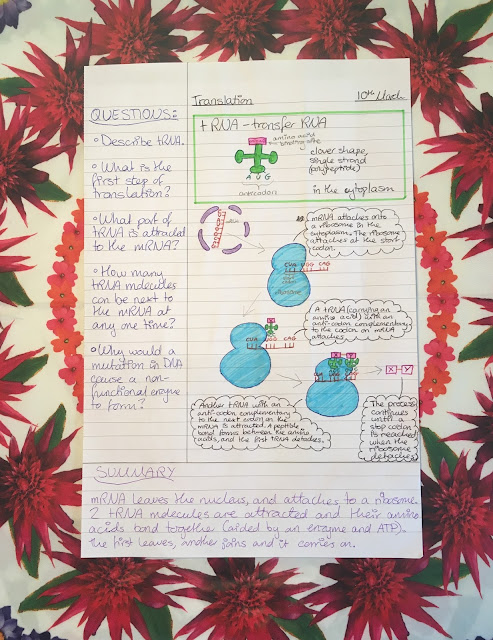So, school is just around the corner; if you're starting Sixth Form or even GCSEs, chances are you'll get more freedom on how you present your work. I found that there was an awful lot less of the "Write this title," and "Draw a spider diagram of this..." when I started Year 12. And while that's great, you're going to be covering an awful lot of material in lessons - so it's best to work out a strategy now, to help you out later with revision.
Personally, I like the Cornell Method. It's a note-taking technique that requires a bit more preparation and effort, but can be super helpful in consolidating your knowledge later on in the course. It was actually featured in a book called 'How to Study in College' by its inventor (Walter Pauk) so it'll probably be a good technique for university too!
Here's my Cornell Method guide:
In case the photo doesn't load on your computer, or if you can't read my dodgy handwriting, I'll do a quick summary here:
1. Draw a 2.5 inch high margin at the bottom of the page. Draw a 2.5 inch wide margin across the left side of the page.
2. Use the remaining space at the top right to take do your classwork as normal.
3. At the end of the week, go back to your work and write a list of questions in that left margin in a different colour, which have their answers embedded in the notes you took. Make sure you know the answers to them!
4. Then, use the bottom section to quickly summarise the work in a different colour again.
It's a bit of a faff, sure, but it's really helped me to make sure I completely understood all my classwork. I do think it actually ended up reducing the amount of revision I needed to do as well! As long as you've drawn the margins on a few sheets of paper before school, you'll be ready to go in lessons, and it's good practice to review your work at the end of the week when you're getting other homework done.
Below is an example of what your work will actually look like (the fact that this piece is from March shows you that it must be good, since I've stuck with it since!)
This post was voted for by someone on my poll, so thank you to whoever voted for it! I keep it running permanently to see what you guys want to read, so drop a vote in if any of them sound interesting - and comment an idea if they don't! Also, let me know if you've got any note-taking tips I can try out because I'm always interested.
How I Take Notes (The Cornell Method)
 Unknown
August 30, 2017
Unknown
August 30, 2017
 Unknown
August 30, 2017
Unknown
August 30, 2017
Unknown
Integer sodales turpis id sapien bibendum, ac tempor quam dignissim. Mauris feugiat lobortis dignissim. Aliquam facilisis, velit sit amet sagittis laoreet, urna risus porta nisi, nec fringilla diam leo quis purus.
Related Articles
Subscribe to:
Post Comments
(
Atom
)
Theme by Free Blogger Templates (below photos and newsletter are not mine). Powered by Blogger.



Really good I will try it but may I ask- do you answer the questions while covering up the main notes with your hand- is that a good technique
ReplyDeleteYeah, that's the idea. That way you can test yourself but if you can't remember the answer or you want to check it then it's super easy! x
Delete